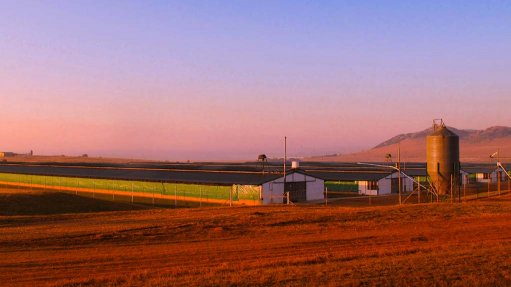SA Home Loans bullish about future, despite 2023 headwinds
As it celebrates its twenty-fifth birthday this week, mortgage finance company and mortgage insurance provider SA Home Loans is optimistic that, despite considerable challenges for consumers and the property market last year, the worst of this cycle has passed, and the company expects a slow but steady improvement in the second half of the year.
The property market was currently undergoing one of toughest cycles seen in the past 25 years, with interest rates having increased at record levels over the past 18 months; and, post the pandemic, the steepest cumulative rate increase seen in over a decade, with an almost 5% increase, CEO Rob Kelso outlined during a discussion on February 26.
He pointed out that interest rates were the dominant factors in home loan cycles. Therefore, the impact of the interest rate increase over the past 18 months had seen home loan instalments increasing in excess of 50%.
This has been exacerbated by a difficult period for consumers, with challenging fundamentals in terms of the consumer price index, inflation rates, cost of living and fuel and grocery prices – “2023 was a year when the consumer came under immense financial strain."
Kelso explained that this resulted in a sharp slowdown in the property market and in mortgage activity, with an almost 25% reduction year-on-year in people buying houses and mortgaging their properties, which negatively impacted on lenders.
The sharp slowdown was owing to consumers being less able to afford property with interest rate increases, and consumers who already had debts coming under considerable stress to pay these instalments – with this not just limited to home loans.
Kelso added that there was strain experienced across almost every income and value brand of home-lending, with this especially impacting properties valued at between R600 000 and R2.5-million to R3-million.
COO Zakheni Dlamini pointed out that, because property prices had not declined, consumers had to earn a higher income to qualify for home loans, and also had to pay higher instalments – which was where considerable strain came in in terms of affordability.
“From an access to housing perspective, we have taken a knock as a country because of the strain that it’s placed on affordability. However, it is a market of cycles, so it will not always be this way. We think we are at peak of the challenges, and as things move forward, affordability and access will improve.”
He added that another positive has been lenders not pulling out of the market in these tough conditions, but rather, making adjustments.
Kelso also pointed out that the current cycle was not perceived as a “crisis cycle”, but rather, a normal, cyclical downturn linked to interest rates.
He posited that the consumer would trade out of this position as interest rates turned. The consensus was that these had peaked, and, barring a global shock to the system, would start to come off slowly from the middle of this year, with this slightly delayed by global geopolitical uncertainty and US inflation levels remaining high.
Kelso added that the expectation was for slow, steady cuts over the 12 to 18 months from the start of that cycle.
He said that, as rates came down slowly from mid-year, the consumer recovered slowly, affordability returned to the system, and consumer confidence increased post the elections, this would engender a steady improvement in the property market again.
Dlamini highlighted that even in difficult conditions, people’s desire to get onto the property ladder did not disappear. He pointed out that the demand that did not materialise because of affordability or uncertainty had now built up, and as market conditions improved, this would quickly come out in the market. This was another reason the company was optimistic about the second half of the year.
Kelso said that, as the largest non-bank mortgage provider in the market, SA Home Loans was well placed to capitalise on opportunities provided by this, with unique insight into the property market.
He added that there was a dynamic of the emergence of new entrants to the banking sector, with these starting to delve into home loans as part of the suite of products they offered.
Kelso highlighted that the company was well positioned to partner with some of these brands to offer home loans.
“This speaks to the unique position that we offer as the only non-bank specialist in the market. We have the expertise and platforms to allow us to do this on behalf of other financial services providers.
“We are proving quite extensively our ability to step into that role of a home loan provider of choice to these blue-chip companies, who have the consumers who are looking for that product,” he acclaimed.
Dlamini outlined the significance for the company of reaching its 25-year milestone, noting that the lending market had changed considerably over this time. He indicated that the company had aimed to evolve in tandem; for example, considerable work had gone into simplifying and streamlining its consulting and website process for consumers looking to get or switch a home loan.
It had also diversified its offering to include home loan-related insurance products, which Kelso said had proven itself through times such as the Covid-19 pandemic. “The insurance products have provided significant cover for the risks that our consumers faced, such as pandemics and floods,” Kelso averred.
He highlighted other successes for the company over its period of operation as including it assisting 300 000 households to become homeowners, across the country, equating to R170-billion in lending.
Moreover, in terms of securitisation, SA Home Loans has raised more than R90-billion from the capital markets in South Africa over the years, which has been put towards funding home loans in the country.
Comments
Press Office
Announcements
What's On
Subscribe to improve your user experience...
Option 1 (equivalent of R125 a month):
Receive a weekly copy of Creamer Media's Engineering News & Mining Weekly magazine
(print copy for those in South Africa and e-magazine for those outside of South Africa)
Receive daily email newsletters
Access to full search results
Access archive of magazine back copies
Access to Projects in Progress
Access to ONE Research Report of your choice in PDF format
Option 2 (equivalent of R375 a month):
All benefits from Option 1
PLUS
Access to Creamer Media's Research Channel Africa for ALL Research Reports, in PDF format, on various industrial and mining sectors
including Electricity; Water; Energy Transition; Hydrogen; Roads, Rail and Ports; Coal; Gold; Platinum; Battery Metals; etc.
Already a subscriber?
Forgotten your password?
Receive weekly copy of Creamer Media's Engineering News & Mining Weekly magazine (print copy for those in South Africa and e-magazine for those outside of South Africa)
➕
Recieve daily email newsletters
➕
Access to full search results
➕
Access archive of magazine back copies
➕
Access to Projects in Progress
➕
Access to ONE Research Report of your choice in PDF format
RESEARCH CHANNEL AFRICA
R4500 (equivalent of R375 a month)
SUBSCRIBEAll benefits from Option 1
➕
Access to Creamer Media's Research Channel Africa for ALL Research Reports on various industrial and mining sectors, in PDF format, including on:
Electricity
➕
Water
➕
Energy Transition
➕
Hydrogen
➕
Roads, Rail and Ports
➕
Coal
➕
Gold
➕
Platinum
➕
Battery Metals
➕
etc.
Receive all benefits from Option 1 or Option 2 delivered to numerous people at your company
➕
Multiple User names and Passwords for simultaneous log-ins
➕
Intranet integration access to all in your organisation





















